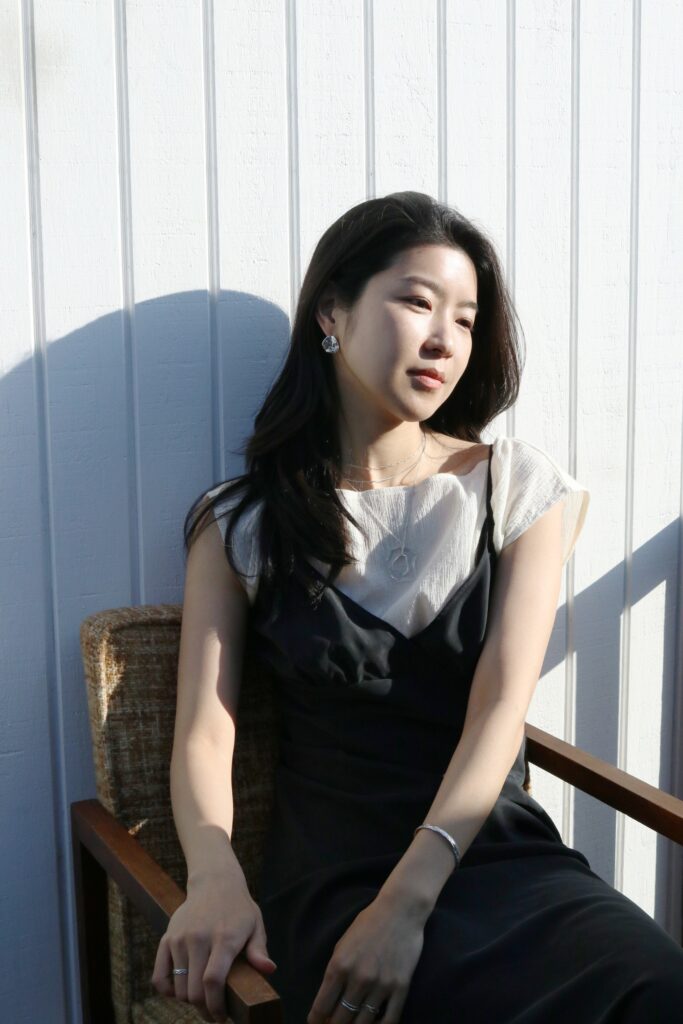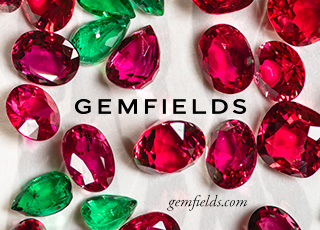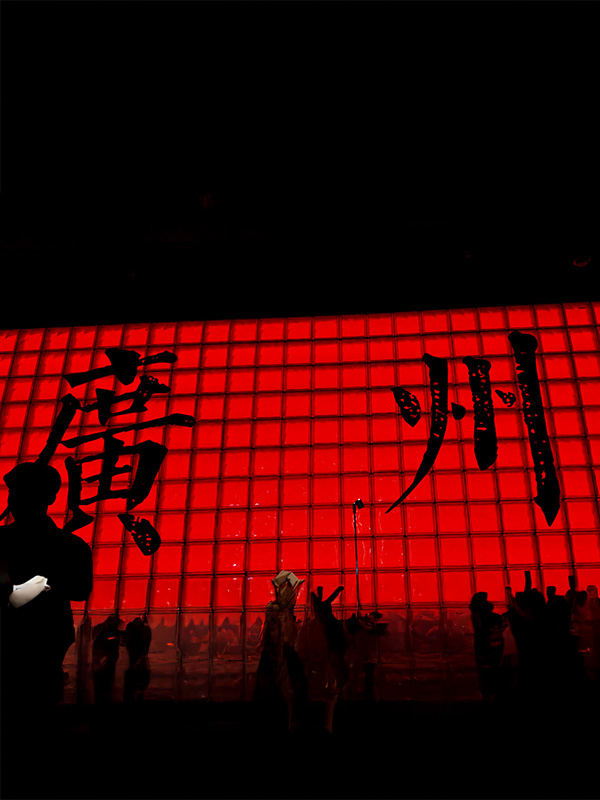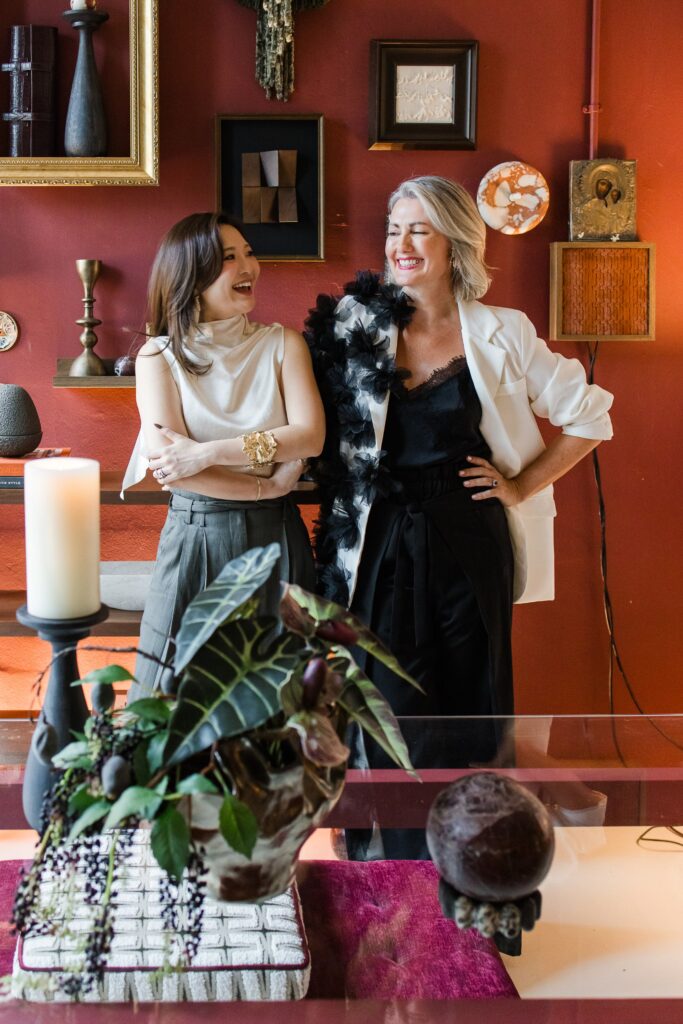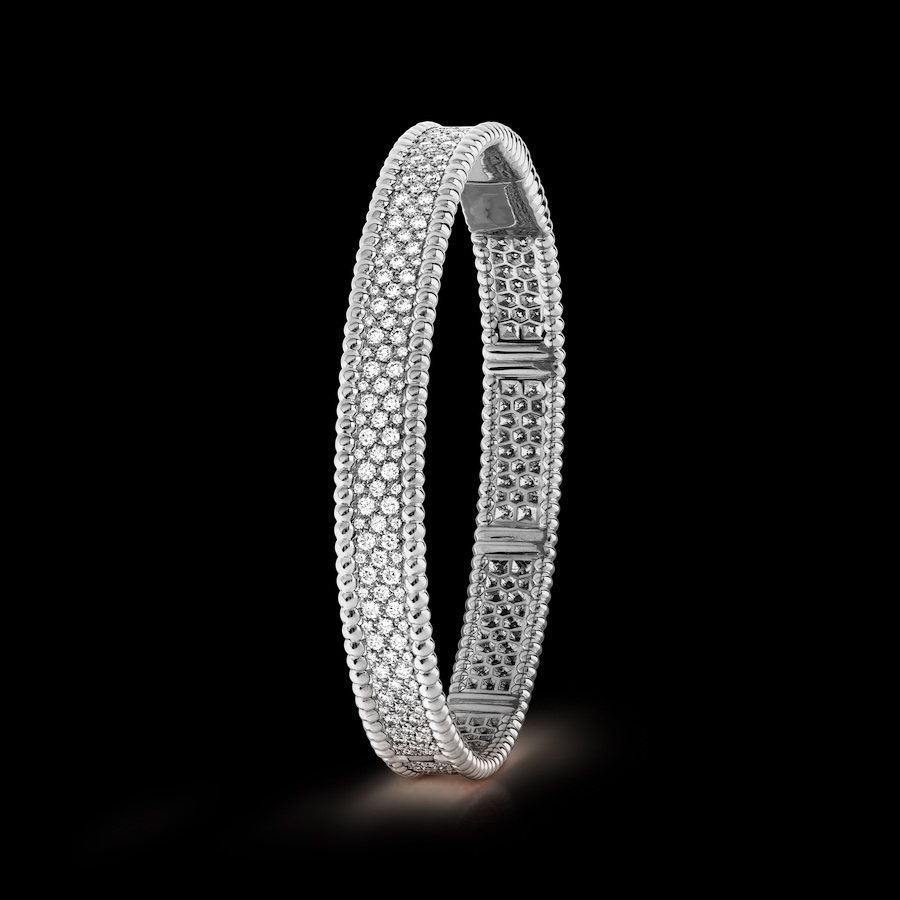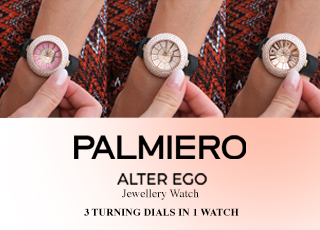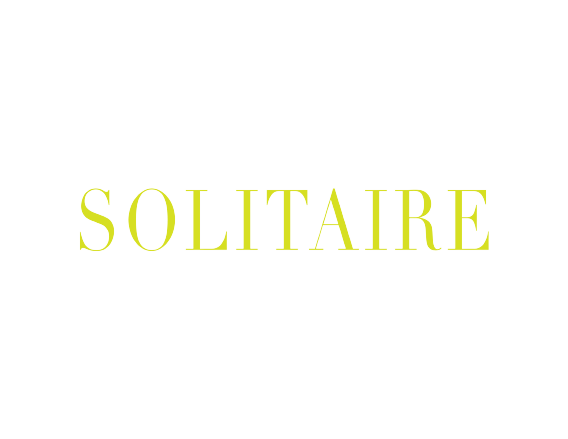by Smitha Sadanandan
Discover the perfect wardrobe additions to elevate your style—cool and contemporary designs from fashion jewellery designers that serve up free-spirited fashion vibes.
JUDE BENHALIM
Designer: Jude Benhalim





Architectural shapes and fashionable aesthetics are Jude Benhalim’s specialty. The Cairo-based designer’s exaggerated forms include multi-wear pieces made in sterling silver or brass dipped in 18k gold. The East-meets-West styles have custom-made jewel toned resin stones.
Jude, who founded her namesake brand in 2011, at the age of 17, has keenly supported local artisans. Everything’s designed and made in her workshop in Cairo by a team adept at hand-piercing metal, stone setting and resin shaping and dyeing.








“The metals – sterling silver and brass – used in my pieces are recycled to decrease resource depletion,” says Jude, as she strives to promote mindful consumption and multi-wear. The jewellery, therefore, is envisioned to be functional and interchangeable.
The process, she adds, that takes the most time and effort is the research. Deciding the direction for the collection and inspiration to shape the story and design are central to her creations.
Jude’s fascination with outer space led to the Collision collection that is replete with undulating layers and striations, wave patterns and striking surface textures. Dunes of the Sahara Desert transform into bracelets, while the duality of the moon informs the voluminous drop earrings. Granulated layers and irregular engravings that she often employs mimic stones and rocks.








The latest collection, Enchanted, delves into a wintry landscape – frost, icicles and snow. Greek architecture also finds references in the Electra line that juxtaposes elaborate spiral motifs with cut-outs and fluid curves.
Structured chain-links and negative spaces too play out in opulent forms. Chokers, necklaces, earrings and rings that are a nod to her Libyan-Syrian-Egyptian heritage has a tribe of celebrity admirers like Kendall Jenner, Adriana Lima and Chrissy Teigen
HIROTAKA
Designer: Hirotaka Inoue








Tokyo-based Hirotaka Inoue champions abstraction. His background in designing traditional high-end jewellery steered him in a different direction when he launched a fashion centric line. “I felt the need to design a collection for how I like to wear jewellery; signature pieces that accentuate the personality and complement the daily style rather than overwhelm it,” he says.
Through his brand, Hirotaka, launched in Soho, New York, in 2010, the designer pursues his passion for creating minimalist and unexpected silhouettes transforming into 10k gold ear threaders, ear pins, ear cuffs, rings, bracelets and necklaces. The idea is to encourage layering to create original combinations that reflect individualism. “Asymmetry creates more movement in styling and imparts the designs with a certain whimsy,” he notes.









Historical movements like Bauhaus, Japanese minimalism, and the Modernist art movement in Scandinavia inform the aesthetics that are translated into handmade jewels by artisans in Japan. “I love organic shapes and observing natural wonders – especially the details of insects and flowers – and extracting the core element, making the original motif almost invisible and pure.”
The silver line Equinox, an homage to the Spring Equinox, sports a bold masculine edge. Joan Miró’s abstract paintings finds resonance in Hirotaka’s designs that place pearls on exaggerated oblong cuffs to dance around the ear. Whimsical hoops are structural but playful – with details, made purposely off-centre, to defy symmetrical harmony.








The delicate pieces crafted in an abstract way often demand particular accents; for example, the way the diamond in the Gossamer bar is set is very specific and elsewhere, a diamond pave bar floats in the centre of an oval hoop.
“I believe everyday pieces should merge functionality and beauty, because I see jewellery as a form that’s creative and lends itself to self-expression.”
CLED
Designer: Seulye Jo
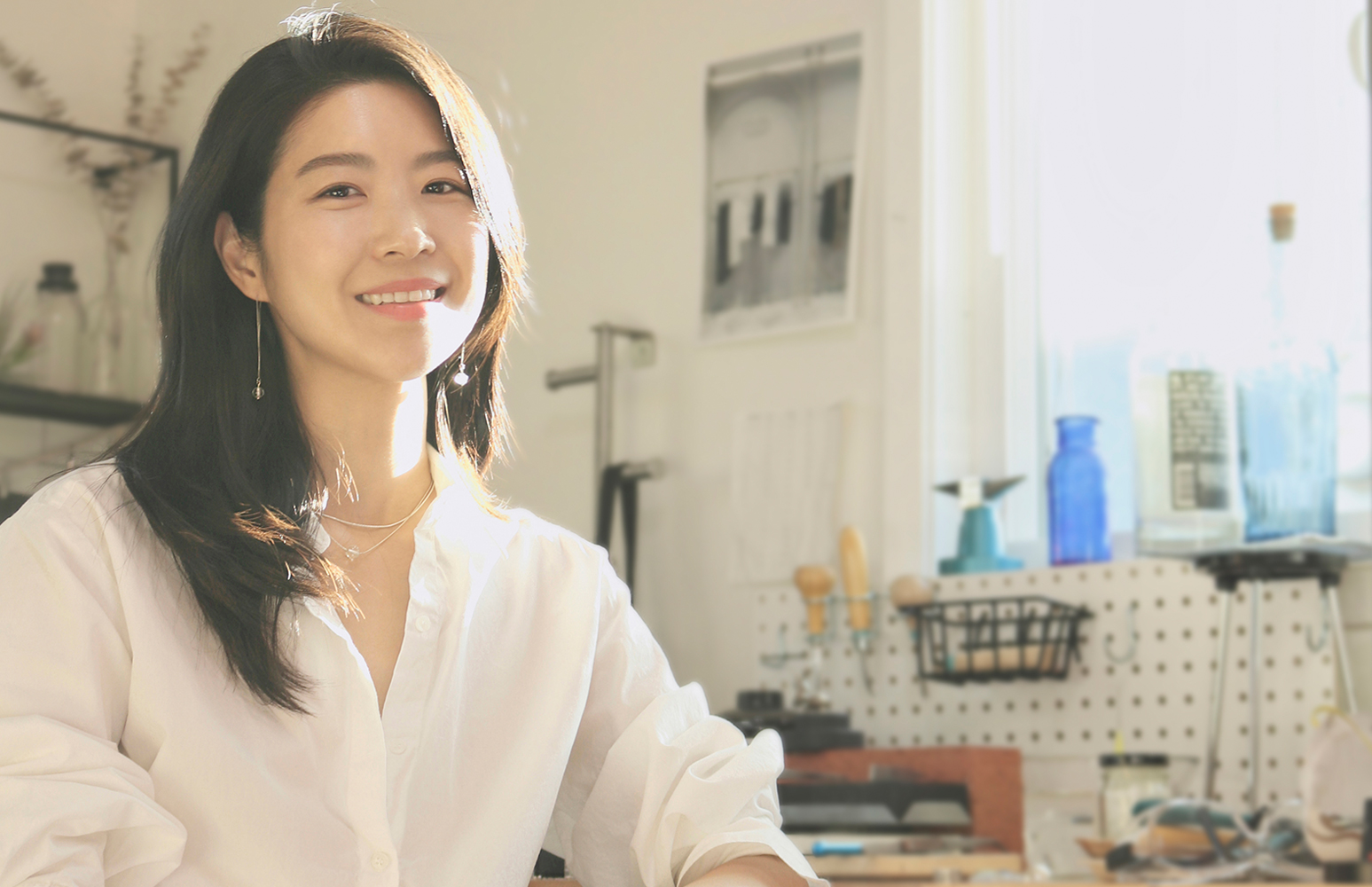
As a child, Seulye Jo dreamed of being a designer. She was particularly drawn to small objects; she loved how intricate details in form and colour could completely transform a design.
With a background in visual communication design, she moved to Los Angeles and majored in jewellery design at the Fashion Institute of Design and Merchandising (FIDM). Seulye Jo worked in the fast fashion industry for several years; it made her more conscious of what she wanted to eventually create.
Her observation of the waste generated and continued use of plastic inspired her to create something sustainable and eco-friendly. “I knew that if I were to create a jewellery line, it had to be earth-friendly and sustainable.”










Seulye Jo – who was against using mined gemstones or animal-derived materials –stumbled upon sea glass during a beach clean-up. This, she realised, could be an ideal material for what she had in mind.
“Glass is made from sand and can be recycled endlessly. It is harmless to the environment. A large amount of glass in the US ends up in landfills with only 35 per cent being recycled. I felt that it would be more sustainable to use discarded or existing glass instead of virgin glass,” she adds.
Her goal was multi-pronged: to demonstrate that upcycled designs could be both fashionable and sustainable – and raise awareness “that someone’s trash can be another person’s treasure.”









Although the designer had several gemstone and metal options to choose from, she decided to create her own Cled Eco Gems using discarded glass. Where would she find enough glass though?
Seulye Jo knew she couldn’t spend all her time digging through trash. So, she reached out to restaurants and bars near her – and, luckily, several of them agreed to contribute discarded glass for her upcycling venture. “We continue to pick up empty glass bottles several times a month from the restaurants and have a steady source of glass.”
Making jewellery, she observes, is a great way to express her creativity and inspiration. Living in Los Angeles allows her to experience diverse cultures and connect with nature.














In her designs for Cled, Seulye Jo incorporates her signature ‘eco-gems’ and metals. “I value all discarded materials and I repurpose them into new objects.” Cled’s earrings, hair accessories, charms, bracelets and necklaces resonate with people and encourages them to purchase while also nurturing an environmentally conscious mindscape. Along the way, she collaborated with Danish watch-jewellery brand Skagen on a line of glass jewels and with others to create lifestyle products, including glass jewellery trays.
While the latest collection Loop, To be Continued, features discarded mirrors and window glass set in a geometric loop, the Icon series relies on a new cutting technique. Experiments with enamel to create unique shades on glass and ideas for exciting new designs keep Seulye Jo busy.
LUCID
Designer: Sarah Al Hassan



Pakistani-Arab designer Sarah Al Hassan’s work is shaped by her multicultural background. A graduate in Public Relations from Regents University, London, she pivoted to follow a career in jewellery design.
Spurred by the desire to work in fashion journalism and fashion PR, Sarah landed an internship with a high jewellery brand while still at the university. “The head designer had worked with Cartier for 20 years – and my job was to shadow him and help articulate his art into words. It was then, while seeing his artistic visions coming to life, that I fell in love with jewellery,” says London-based Sarah.
Her prêt line, Lucid, came about at the height of the pandemic lockdown in London, while she was in the midst of rebranding her fine jewellery label, Sarah Noor. She thought it would be great to launch a line that was very accessible, light to wear and quite fun.








Lucid’s capsule line serves up fashion vibes with hoops and bangles made from resin – they sport a glass-like appearance and the cubic zirconia stones embedded into the resin lends a cheery hint of sparkle.
The fashion jewellery line, explains Sarah, owes its name to Lucida, the brightest star in the constellation, and is a fusion of both the dream world and luminosity. “I was inspired by the elements of light and wanted the pieces to mirror light in a similar way.”
Experimenting with resin and multi-coloured stones for Lucid was clearly a new territory for the designer. “I wanted to focus on a clean linear design to allow light flow into the pieces and reflect a kaleidoscope of colours. It also needed to feel fresh, young and at an easy-to-buy price point.”





Following the success of the first two drops, Sarah has added cheerful stackable bangles and chubby rings to the staple resin line. Hoops in various sizes, studded in pink, blue, green, yellow cubic zirconia, will be launched shortly – it’s a great opportunity to shake up your jewellery box with playful pieces.
With Lily Collins wearing the Lucid hoops in the last season of the popular series ‘Emily in Paris,’ Sarah is clearly on a roll.
NAKARD
Designer: Nak Armstrong
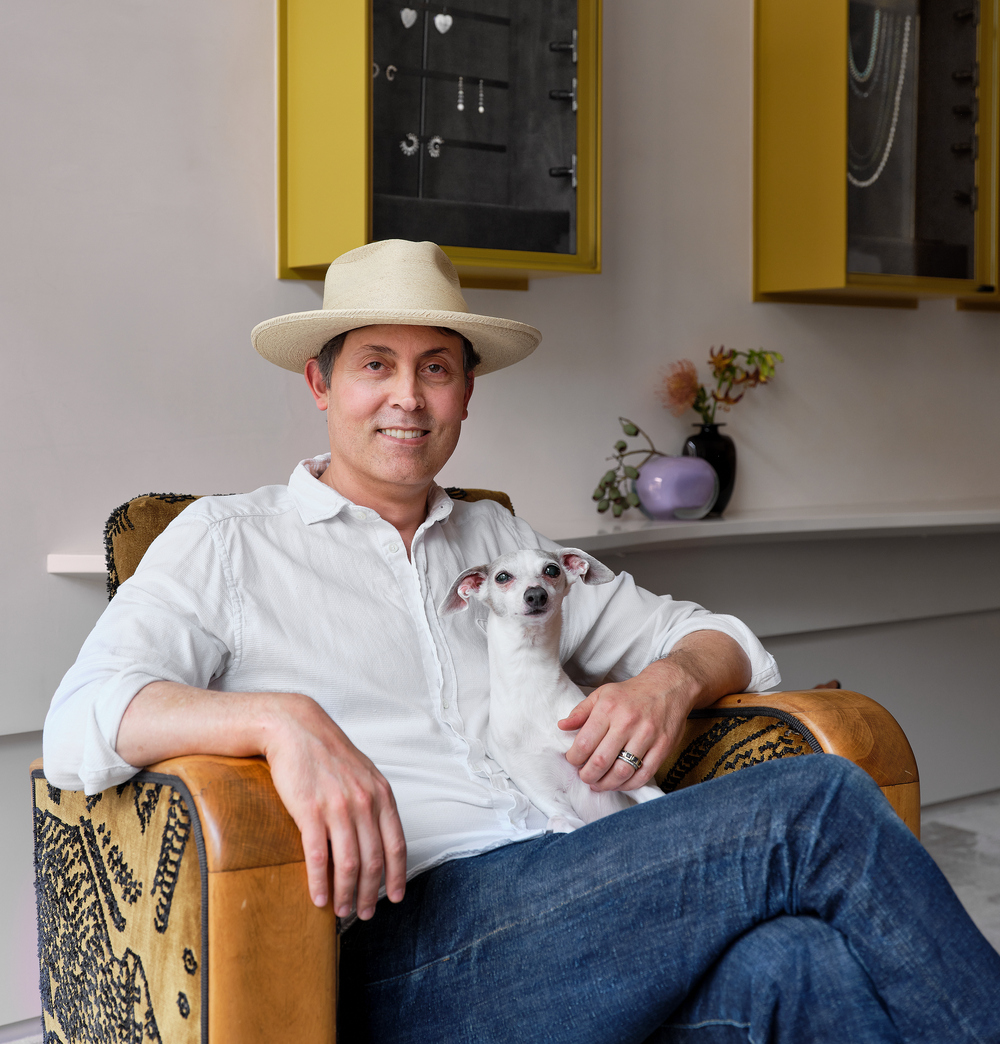
Nakard, a collection of demi-fine jewels, emerges from the profound passion for mosaics informed by designer Nak Armstrong’s hiatus in Rome. The genesis of the fashion line can be traced back to a necklace crafted – upon his return – from over 100 square tile-like gems.
It swiftly ascended to bestseller status within his main collection. “I have continued to evolve on that idea of repetitive elements, playing with different shapes and scale as I design new collections,” says Austin-based designer, who has a penchant for referencing his background in architecture and fashion.






As gold prices increased, Nak toyed with the idea of reintroducing “large format fine jewellery but at an accessible price point – a niche market that has been underserved for some time.” Nakard, he believes, allows clients to buy deeper into the line and layer the pieces as intended.
Scallop band rings, bypass hoops, rivière necklace, mobile-like earrings, ear climbers and tennis bracelets – all realised in sterling silver play with semi-precious and hardstones like Ethiopian opal, chrysoprase, turquoise, rainbow moonstone, green onyx, pink opal, white zircon and black spinel. Chartreuse enamel, round, tapered baguettes, tile-shaped or half-moon shaped stones are also employed as accents alongside rhodium finishes.
Nak delights in using proprietary gemstone cuts and experimenting with metalworking techniques for his eponymous fine jewellery brand. He uses the same inspiration to underpin the designs for Nakard – geometric nuances of natural and textile forms rendered into signature stone plissé settings that borrow on ruching and pleating.






He has also introduced interesting gems like blue kyanite and apatite, besides pearls, in his new Bubble collection. “Using these stones in combination with sterling silver enables us to offer at a lower price point than our fine jewellery collection, but still remain incredibly interesting.” The Bubble series delves into his love for cabochons and introduces a three-dimensional element with spherically carved stones and pearls.
In each of his pieces, Nak’s refusal to conform to rules reign supreme. His talent is evident in the unmistakably feminine designs – be that a more solitaire-focused silhouette for a pair of classic push-pin studs, or girandole earrings and rings set with larger-cut stones, accentuated by enamel-coated settings.
Monica Vinader
Designer: Monica Vinader
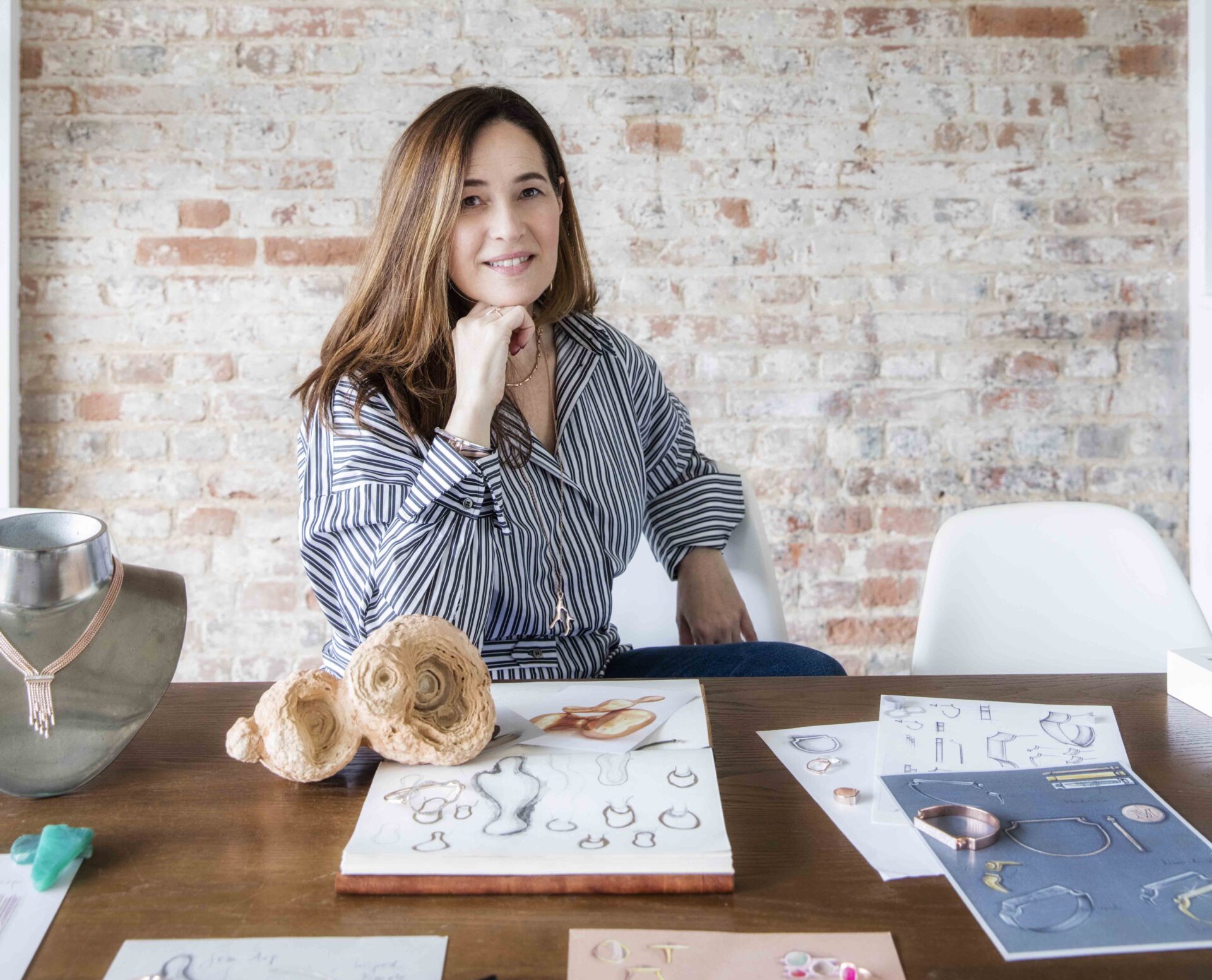
Monica Vinader, hailed as doyenne of demi-fine jewellery, made stacking a stylish trend in Britain. When she founded her business back in 2008, her decision was rooted in creating jewellery “that you could buy for yourself rather than wait to have it gifted”.
She wanted women to feel empowered to invest in themselves – be it for an occasion or to feel great every day.
“But back then, luxury jewellery that was affordable didn’t exist. “It was either fashion or fine jewellery—there was nothing in-between,” she points out. That’s where her demi-fine, vermeil pieces lent their sparkle.




“I designed jewellery that bridged this gap; accessible pieces that didn’t compromise on quality and could be restyled over and over again.”
The wealth of special designs includes Biwa pearls, 18k gold jewels set with lab grown gems, and semi-precious stones like red and green onyx, kyanite, malachite. With bespoke gemstone cutters in Jaipur and manufacturing spread across factories in Jaipur, Mumbai and Bangkok, Monica’s brand has expanded its presence even in East Asia.
Her luxurious demi-fine jewels draw on artisanal practices, as she strives to work with manufacturers “who explore less wasteful ways” to make them. As she looked for ways to not compromise on sparkle while ensuring the price remains affordable, she hit upon the idea to use lab grown gems.
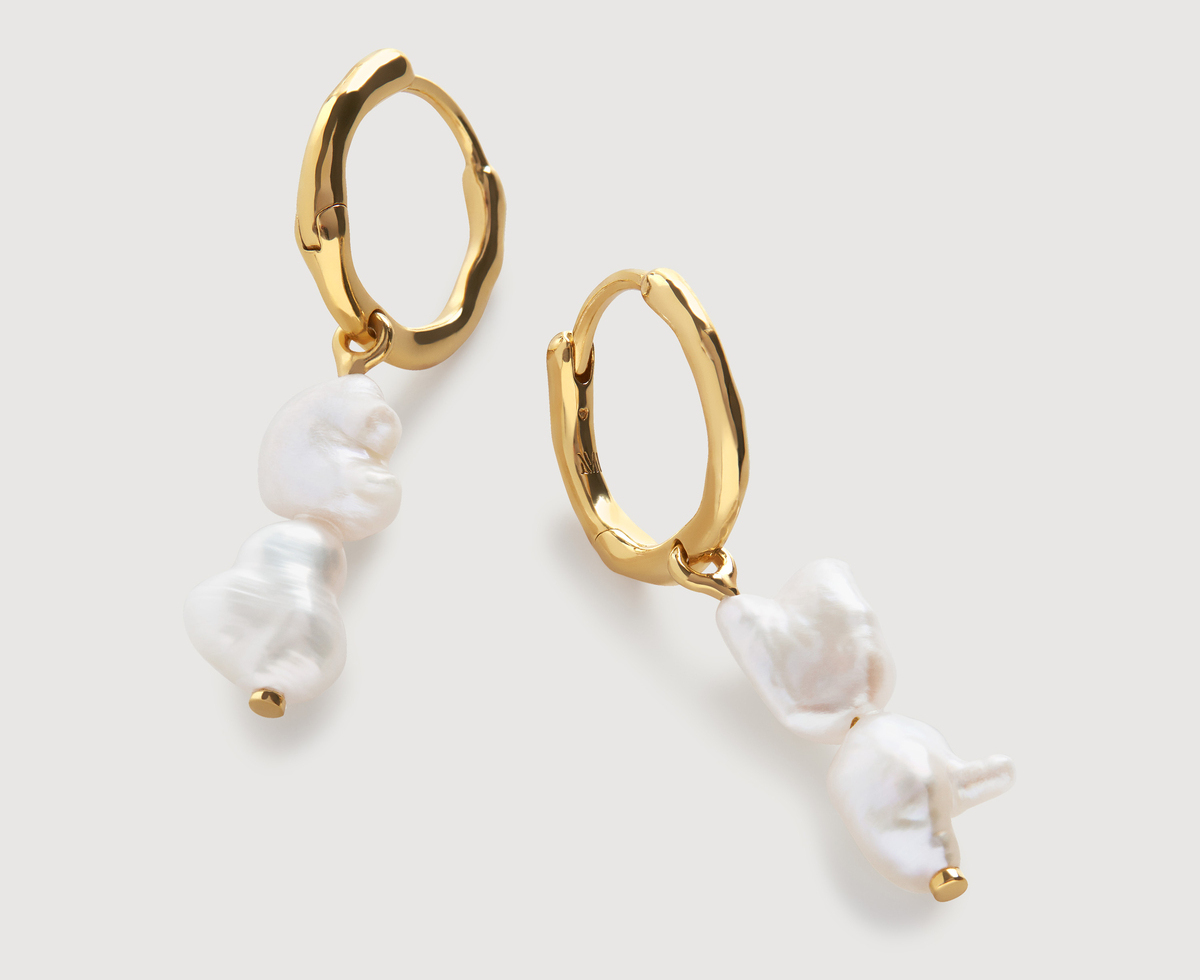
Last October, she launched her namesake brand’s first ever Lab Grown Diamond collection. “It took us four years, but eventually we found a partner that uses 100% renewable energy.”
Over the course of the year, the designer has collaborated with four inspiring women: Hollywood stylist Kate Young, florist Willow Crossley, ceramicist Florence St. George, and creative director of fashion brand Mother of Pearl Amy Powney.
“I’ve always loved the collaboration process, bringing together our shared values and passions to create jewellery and homeware that will stand the test of time,” says Monica, adding that the two new boutiques – one in Southern California and one in Leeds – coincided with the launch of the brand’s welded permanent bracelet service.
“We’d been seeing so much success with our piercing and complimentary engraving and monogramming services that it was a natural next step to expand our in-store offering.” With word spreading far and wide, it wasn’t a surprise at all to see American actress Julia Garner pair her sequin gown with jewels from Monica Vinader at the 2024 Golden Globes in January.
MISHO
Designer: Suhani Parekh






Under the creative direction of founder Suhani Parekh, Misho marries metal with contemporary forms. Trained as a sculptor at Goldsmiths, University of London, Suhani found that her designs looked better placed on the body rather than on a plinth.
As she worked with metals, she became intrigued by how objects could ‘activate the space’ of the body. “Surprisingly, my off-duty creations garnered attention whenever I wore them, sparking a newfound ambition to become a jewellery designer.”
Throughout this journey, she continued crafting jewellery, blending traditional silversmithing with contemporary techniques, and eventually found her unique niche “at the intersection of sculpture, architecture and design”.
Encouraged by the positive response, she launched her conceptual jewellery label, and “what started as a one-woman venture at a lone desk has now evolved into a 35-member team” based in Mumbai and London.







Instead of approaching the design of the jewellery purely as accessories, she conceives them as sculptures. “Perhaps, it’s the artistic touch that gives them a more universally appealing quality,” she elaborates on Misho’s pieces handcrafted in bronze, and plated in 22k gold, or silver rhodium.
Her Pebble Pods – earrings for Apple’s Airpods – stirred up immense excitement on the internet when launched. Its inspiration came from the challenge of integrating AirPods into daily activities. “They would often slip out during exercise or while fixing my hair and styling them with earrings was a struggle. I aimed to craft a seamless design that not only complements AirPods but also provides support, ensuring they stay in place and are easy to manage,” she points out.








The designs are invariably inspired by the world around her. In 2022, Suhani brewed a new idea. She teamed up with Araku, a coffee plantation in the Araku Valley in the Eastern Ghats of India, on an arresting line of jewels. About her inspiration from the tribal farmers in the region, she says, “collections like Araku are very special and while it was done in collaboration, there was no force to my designs.”
The collection came to her naturally “because I found beauty in their story and the traditions.” While her studio continues to grow in Mumbai, and she builds up new collections with different techniques, materials and finishes, Misho’s fan base expands with the addition of Beyoncé, Dua Lipa, Zendaya, Lady Gaga, Kim Kardashian, Adele and Billie Eilish.
Charlotte Chesnais
Designer: Charlotte Chesnais




Charlotte Chesnais stepped from the world of fashion into that of jewellery, with her first creation rolling back to her stint at Balenciaga, where she worked with its then creative director, Nicolas Ghesquière. “It was a stackable bracelet with a play of multiple proportions,” she shares.
In 2015, Charlotte launched her eponymous jewellery brand, reimagined classical forms and quickly evolved a creative language that became instantly recognisable. She likes to juxtapose the jewellery object and the body with fluid, dynamic, pointed and disciplined lines.
“My pieces are not just earrings, rings, bracelets, or necklaces – they are objects that hold beautifully on the body and stand alone as independent designs,” explains the Paris-based designer.
Charlotte, whose creative process is intimately linked to sculpture, enjoys making pieces that “modulate the balanced classical sculptural style at various degrees,” and works against “established aesthetics, bringing forth, over time, my own family of archetypes.” Sculpture, for her, is a discipline and visual art among many others. “It is illustrative 3D work – and that’s how I approach my designs.” Her fascination for pieces, simple and sophisticated, led to a unique and personal brand.







Charlotte wanted to use gold but couldn’t afford it at the time. Vermeil, an amalgamation of silver and gold, also one of the ‘noblest materials’ that appealed to her served as a replacement for gold. “I liked the boxes it checked: affordable, an alloy of gold and silver, and rich in history. Many ornaments for the European royalty (crowns, sceptres, etc.) were made in vermeil – it’s an ancestral material.”
Charlotte’s organic creations have enthusiastic fans who love her obsession with novel forms sinuously wrapping around the neck, wrist, fingers and ears. It so happened that friend-and-founder of luxury fragrance label Byredo, Ben Gorman, ordered a necklace from her.
“I suggested that we create it together – and he said yes. The result is the Value Chain collection. The idea was to create a piece of jewellery that we could both wear composed of two different but complementary links.”
Charlotte uses varied materials to translate her designs into jewellery – gold, diamonds, gemstones, blown glass, wood and pearls. “I am very curious and enjoy exploring different workshops and crafts. Each interaction with a workshop is an opportunity to create new things,” adds the designer, as she dreams up bold new designs.
Kinraden
Designer: Sarah Müllertz














Sarah Müllertz has a particular affinity for architecture. And that’s understandable given her background in architecture. She discusses the detour that led her to become a jeweller: armed with a Masters’ Degree from the Royal Academy of Fine Arts, in Copenhagen, she became Head of Production and Sales at a jewellery brand in Denmark.
As her passion and understanding of the craft grew infinitely, she found her calling.
Initially, she dabbled in jewellery on the side, while working full-time as Partner and Global Head of Design at Henning Larsen Architects, a noted international studio.
Although she established her own line in 2014, it was only in 2019 that she took the plunge to focus on Kinraden – a responsible jewellery brand with a nod to minimalistic Scandinavian architecture and design. “I was fascinated by how I could create pieces with a material composition and scale that resembled sculpture and architectural precision.”
She seeks inspiration from the precision art of Japanese joinery, the forms of classical musical instruments that she learned to play during her childhood – and her architectural training.











Nurturing the belief that “creating beautiful jewellery need not harm the planet,” she began working with recycled and readily restorable materials from the outset. This quest also led her to a Munich-based supplier, who ensures she has a steady supply of recycled gold and silver – all repurposed from the healthcare and technology industries.
Meanwhile, during her research for sustainable materials, Sarah stumbled upon Mpingo Blackwood. “I discovered that it was possible to cut the Mpingo Blackwood in the same way as we cut traditional stones. So, I created our diamond-cut Mpingo Blackwood, a mainstay of our collection today.”
The wood she uses is sourced from a WWF-protected forest in Tanzania where it is often harvested from the forest floor. Sarah explores an interplay between geometry and sustainability across the five collections – all of which combine gently moulded, recycled gold and silver with FSC-certified hand carved wood. She has added new pieces to popular lines, Stilos and Two Worlds, and is mulling over plenty of new ideas for understated and elegant compositions.
SO-LE STUDIO
Designer: Maria Sole Ferragamo





- A focus on upcycled materials provides ballast for new designs
When she launched her own label in 2017, Maria Sole Ferragamo eschewed the desire to source new materials. The idea, for So-Le Studio, was to upcycle materials thoughtfully, using technical innovation and smart thinking to explore leather from a new and different perspective.
Scraps and leather trims, castaways, and brass shavings – discards from factories – form part of her creative universe that melds versatility, lightness, colour, and whimsy.
Challenges, observes the Milan-based designer, are inspiring. The material’s scarcity and apparent fragility challenge her as a designer.
“Metal shavings of a specific form are directly linked to the piece they are shaved off from; once that piece is out of production, it is not easy to find the specific metal shaving anymore.”
This provides her with the impetus to think outside the box. “I see all these limits as a stimulus to creativity,” Maria explains. “I see a beautiful energy in the contrast of combining fun, party jewellery pieces with a simple everyday look. Besides, I love the process of transforming an abandoned resource into something new again,” she adds.
“I source the brass shavings in Tuscany from factories that create metal components for the luxury fashion industry, usually for accessories and fashion jewellery,” says the designer, who references nature and architecture in her designs.











The love of leather, Maria recalls, was kindled during the weeks that she spent working at her grandfather Salvatore Ferragamo’s luxury footwear factory in Florence. “It’s a family tradition; during the summers we were sent off to the factory to work for a couple of weeks across various departments. It was very instinctive and natural for me, therefore, to go down this route,” she says.
“Every time I see a piece of leather, it speaks to me.”
Last fall, Maria designed a capsule line plated in 20k gold for Elisabetta Cipriani’s gallery, specifically for PAD London, the international art and design fair. The Trame collection, just like the Trucioli earrings, was made from brass leftovers and entirely handwoven by the designer.
“It was such a personal process and more of an artistic project, especially because Trame follows the principles of Arte Povera. It drew on the ancestral craft of weaving,” Maria informs.
“Everyday materials are elevated to works of art, telling a story through craft.” While she doesn’t play favourites with her coveted best-sellers that include Minialie, Sei, Sempre, Athena, Lolita, Armadillo, she acknowledges the new Beetle brooches and Harmonia hairclips have won the hearts of her clients.
“I’ve been wanting to create a brooch for a long time. I love the idea of the object itself.” Maria has made the brooch incredibly contemporary by marrying the leather remnants with interesting volumes and patterns.
The Beetle series is informed by her grandfather’s iconic woven sandal pattern from the 1930s. At Maria’s workshop, leather and metal castaways find themselves in elevated company.

